Forests are essential for global development and preventing dangerous climate change but currently, markets fail to realise this.
We depend on forests for our survival, from the air we breathe to the wood we use. Besides providing habitats for animals and livelihoods for humans, forests also offer watershed protection, prevent soil erosion and reduce climate change.
Yet, despite our dependence on forests, despite the fact that our livelihood is intertwined to them, we are allowing them to die out.

In case you didn‘t know, forests are home to a different trees, amphibians, birds and mammal species but they are facing a combination of threats.
This threats are a result of our species, the human species. Our continued desire to evolve, to create, to build, to discover has lead us to destroy our natural resources.
Importance of forests
After oceans, forests are the world’s largest storehouses of carbon. Forests provide ecosystem services that are critical to human welfare. Some of these are:
1. Absorbing harmful greenhouse gasses that produce climate change.
2. Providing clean water for drinking, bathing, and other household needs.
3. Protecting watersheds and reducing or slowing the amount of erosion and chemicals that reach waterways.
4. Serving as a buffer in natural disasters like flood and rainfalls.
5. Providing habitat to more than half of the world’s land-based species.
Just to be clear, there are different type of forest. They are shaped by the amount of solar radiation and precipitation and this conditions determine what organisms can survive in an area. Consequently, there are three types of forests: boreal, temperate, and tropical.

Boreal forests, are found farthest north, experience long, cold winters with short growing seasons. Temperate forests, are located in the mid-latitudes, have four distinct seasons. Tropical forests, are found along the equator, experience high temperatures, long growing seasons, and shelter inconceivable amounts of biodiversity.
Boreal forests tend to have shallow, acidic, nutrient-poor soils. Climate change is a major threat to boreal forests. As temperatures augment, the ground becomes soft and swampy and many trees eventually lose stability and die.

Temperate forests are located at mid-latitudes, which gives them their characteristic four seasons. Bears, bobcats, squirrels, and deer live there.
With in Temperate forests we find: Deciduous Forest, Coniferous Forest and Rainforests.
For example, the Amazon – the world’s biggest rainforest – has an estimated 15,000 species of trees, an estimated 3,000 species of fish in the river system and there are currently 1,300 described species of birds. But about 17% of it has been deforested.
Tropical forests are closed canopy forests growing within 28 degrees north or south of the equator. They are very wet places, receiving more than 200 cm rainfall per year, either seasonally or throughout the year.
Tropical forests are some of the richest, most exciting areas on earth. They are home to gigantic trees, colourful birds and a huge variety of fascinating mammals.
As a matter of fact, about 80% of the world’s documented species can be found in tropical rainforests. These forests cover only a tenth of the surface of the planet.
There are several types of tropical, they are: Evergreen Rainforest, Tropical Moist Forest, Tropical Dry Forest and Mangrove.
Partnerships for Forests
Given the fact that deforestation is a current problem that seems to have no end, many have decided to work in order to find a viable solution. This is how we arrived at Partnerships for Forests. So, given this opportunity I decided to head on and interview Luis Fernando Rios, who is this NGO’s country manager in Colombia.
The idea behind this NGO is to reduce the pressure on forests and improve livelihoods.
Laura Viera A: When and how was Partnerships for Forests created?
Luis Fernando Rios, country manager in Colombia : In September 2014, a coalition of governments, corporations, indigenous organizations, and non-governmental organizations signed the New York Declaration on Forests (NYDF), which outlined 10 goals and an action plan. Among the efforts were the reduction of approximately 9 million tons of CO2 annually, the reduction in the rate of forest loss by 2030 as well as the elimination of deforestation in agricultural chains and that associated with basic needs. Likewise, objectives were projected to support the implementation of strategies, the generation of public policies, as well as the governance and empowerment of local communities.
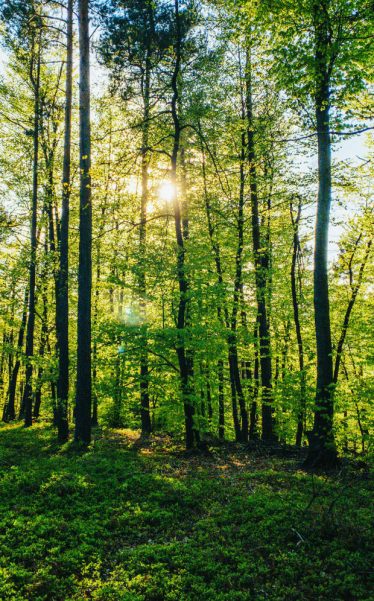
Laura Viera A: Did anything changed during the Paris Agreement?
Luis Fernando Rios, country manager in Colombia : Yes. In 2015, within the framework of the Paris Agreement and following up on the New York Declaration, nine European countries signed the Declaration with the purpose of promoting deforestation-free raw materials through cooperation with the public and private sector.
Laura Viera A: Then what happened?
Luis Fernando Rios, country manager in Colombia: In 2016 the UK government launched a program in Africa and Asia, funded by the Department for International Development (DFID) to provide technical and financial assistance to strengthen sustainable land use alternatives and sustainable value chains committed to improving people’s quality of life and delivering zero deforestation outcomes. The good results prompted the expansion of the program to Latin America with the support of the Department of Business, Energy and Industrial Strategy (BEIS).
Partnerships for Forests works in East, West and Central Africa, South East Asia and Latin America. In all of this places there is a significant opportunities for investments in sustainable forests and land use.
The program (Partnerships for Forests) was created and is funded by the UK government and is implemented by The Palladium Group and SYSTEMIQ.
The main purpose is to generate a change to ensure sustainable value chains and generate benefits that include biodiversity and gender equity in value propositions.
The Problem
So, the problem we are facing is not simple at all. Our problem is deforestation. Deforestation is the purposeful clearing of forested land. Throughout history and into modern times, forests have been eliminated.
As we are aware, forests contain some of the richest concentrations of biodiversity on the planet.

Further more, 300 million people live in forests, including 60 million indigenous people. Between 1990 and 2015, the world lost some 129 million hectares of forest, an area the size of South Africa.
Laura Viera A: What is the problem?
Luis Fernando Rios, country manager in Colombia: Just to give an example, in 2020 Colombia lost 2.3 million hectares of forest due to deforestation, making us above countries such as Bolivia, Ecuador and Peru. According to IDEAM, since 1990 approximately 7% of forest cover has been lost in the country, where ecosystems such as the dry forest have already lost 90% of their original territory due to the expansion of the agricultural frontier. On the other hand, 66% of the country’s forests are in the Amazon, a region that lost more than 100,000 hectares in 2020. In 2021 we are seeing a decrease in deforestation, but the figures are still very high. While the effects on biodiversity and the function and structure of these ecosystems are seriously affected, it is necessary to think about the deeper causes that have generated these scenarios. Likewise, we have failed to provide livelihood alternatives to the communities living in these areas, which is why it is important to generate sustainable productive opportunities for these communities, where they can take advantage of natural resources without affecting natural cycles and in harmony with biodiversity.
It is extremely sad but, deforestation has greatly altered landscapes around the world. Deforestation poses an environmental problem. It hurts different climates around the world and it is a huge threat to the plants and animals that live within the forest.
When deforestation occurs, it entails cutting down massive amounts of trees and vegetation.
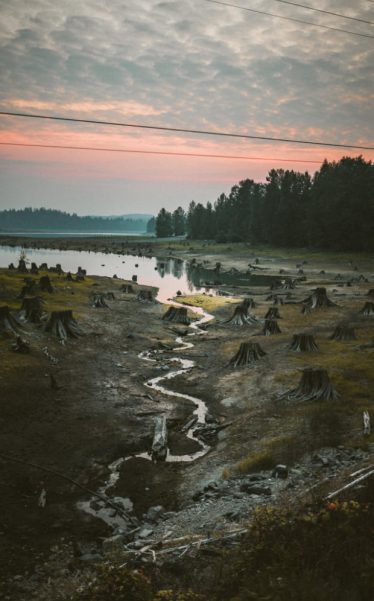
Some animals are able to find different food sources, however others die and in some cases become extinct altogether.
Two thousand years ago, 80 percent of Western Europe was forested. However, currently its only 34 percent.
In North America, about half of the forests in the eastern part of the continent were cut down for timber and agriculture.
China has lost great expanses of its forests over the past 4,000 years and now just over 20 percent of it is forested. Much of Earth’s farmland was once forests.
Currently, the greatest amount of deforestation is occurring in tropical rainforests, aided by extensive road construction into regions that were once almost inaccessible.
Building or upgrading roads into forests makes them more accessible for exploitation.
Tropical forests are also cleared to make way for logging, cattle ranching, and oil palm and rubber tree plantations.
Consequences of Deforestation
Obviously, deforestation has many consequences. It can result in more carbon dioxide being released into the atmosphere. That is because trees take in carbon dioxide from the air for photosynthesis, and carbon is locked chemically in their wood.
When trees are burned, carbon returns to the atmosphere as carbon dioxide. And, the problem is that with fewer trees around to take in the carbon dioxide, the greenhouse gas accumulates in the atmosphere and accelerates global warming.
The loss of trees from a forest can leave soil more prone to erosion.
Laura Viera A: Do we need to work to take care of forests?
Luis Fernando Rios, country manager in Colombia: Absolutely. Humans depend on nature and particularly on forests for food, the air we breathe, water and the raw materials we use, among other ecosystem services. Moreover, it is estimated that 2 billion people directly or indirectly require forests for their livelihoods and these ecosystems provide work for more than 13 million people. Forests cover 30% of the earth’s surface, but are disappearing at an alarming rate, affecting even planetary processes. On the other hand, 80% of terrestrial biodiversity is present in these ecosystems and the destruction of these habitats puts 400-600 species at risk of extinction annually. The unsustainable use of forest and agricultural raw materials causes 50% of deforestation, altering nutrient cycles, rainfall patterns and limiting the capacity of these ecosystems to absorb carbon and regulate the climate as a means of adapting to climate change.
The care of these ecosystems is deeply associated with the future of humans, which is why we urgently need a vision that gives equal importance to the protection of biodiversity, forests, production systems and people’s well-being.
Another problem is that, it affects the world’s biodiversity. Without shelter, food and water the forests supply, many thousands of species that coexist within and beneath the canopy of trees also vanish.
Tropical forests are home to great numbers of animal and plant species. When forests are logged or burned, it can drive many of those species into extinction. Some scientists say we are already in the midst of a mass-extinction episode.
While deforestation can be permanent, this is not always the case. In North America, for example, forests in many areas are returning thanks to conservation efforts.
Laura Viera A: Have you been confronted with absurd or shocking realities in Colombia?
Luis Fernando Rios, country manager in Colombia: We have seen security issues in the country. Some projects have not been able to move forward or even be considered. Many of the areas of high deforestation in the country coincide with the fact that they have security complications and there is a high presence of illegal armed groups. The presence of the State in some of these areas is non-existent. In some parts of the country, non-timber forest products are not known at all. No one consumes or uses them, while in other parts of the world they are in demand at a very high price.
Aiming for a solution
Currently, markets fail to attach a value to the social and environmental benefits that forests provide. As a result, sustainable investments that do factor in these benefits can be hard to realise.
More often than not, the short-term economic gains from degrading or converting forests are greater than those from leaving them standing.
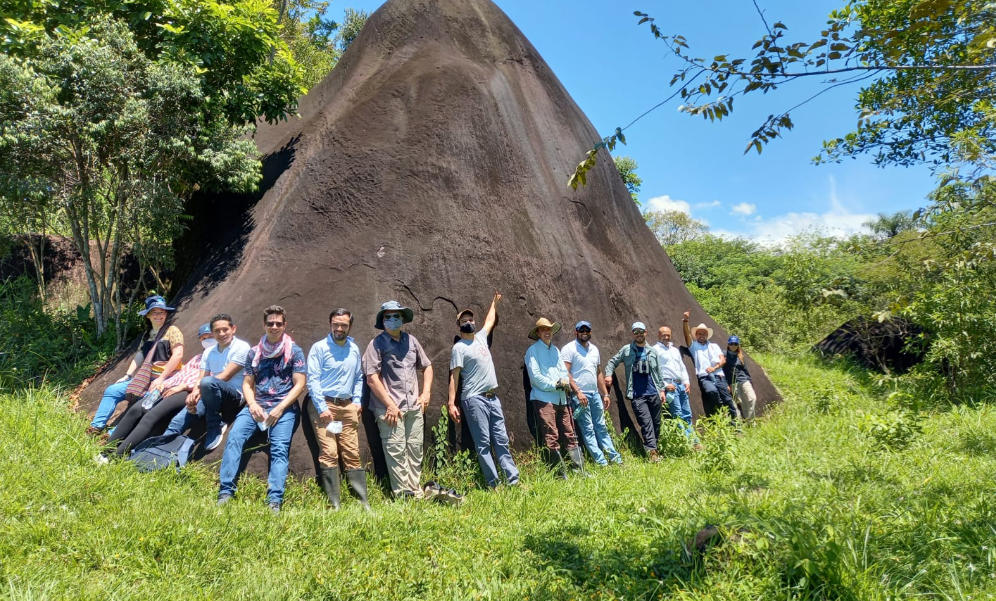
This is why, new approaches are needed, which engage all key actors.
Partnerships for Forests assemble investments in which the private sector, public sector and communities can achieve shared value from sustainable forests and sustainable land use.
Laura Viera A: We have advanced in many aspects as a society, however, the issue of deforestation is still ongoing and seems to have no end, what should we do to change this in Colombia?
Luis Fernando Rios, country manager in Colombia: It is important to highlight that Colombia has advanced in the development of public policy for the prevention of deforestation. We believe that the new decree on non-timber forest products (690 of 2021), which we helped to formulate and socialize from Partnerships for Forests , which provides clear rules for issuing permits to harvest non-timber products, should be socialized and promoted among decision makers at the national and local levels. This decree seeks to use the forest and that its resources can be harvested as long as this is done in a sustainable manner. This process therefore seeks to involve the communities that inhabit these areas, but also the private sector, as there is an increasing market demand for sustainable raw materials that are more natural and do not generate negative impacts.

Laura Viera A: How can the private sector do?
Luis Fernando Rios, country manager in Colombia: The private sector must be involved as a key player because it has the capacity to incorporate the value of biodiversity and better land use into the markets. Likewise, through the companies, the possibility of generating sustainable solutions for the generation of lasting impacts is materialized, in addition to leaving installed capacity to replicate this type of initiatives. Additionally, it is necessary to convert conservation objectives into business models that can be financed and simultaneously strengthen synergies between the private and public sectors and communities to catalyze investment in forests and sustainable land use, because only in this way will it be possible to achieve the goals set for 2030 in terms of biodiversity and climate change.
Laura Viera A: What are the short, medium and long-term objectives?
Luis Fernando Rios, country manager in Colombia: The macro vision based on international agreements implies reducing poverty and greenhouse gas emissions simultaneously with biodiversity conservation by 2025. However, this requires great efforts in multiple dimensions, which is why Partnerships for Forests has set goals for 2023 within the scope of the program that contribute to this great objective and at the same time provide verifiable follow-up, monitoring and evaluation information on the achievements reached. First, Partnerships for Forests seeks to positively impact a total of 80,000 people in Africa, Asia and Latin America, as direct beneficiaries of the program, within the five capital categories of human, social, natural, physical and financial capital. The program also seeks to have 1 million hectares of ecosystems under protection, of which 220,000 must be in Latin America, ranging from pristine ecosystems with protection approaches to degraded ecosystems for which, for example, restoration activities are being implemented. Finally, the program seeks to mobilize £33 million of private capital in Latin America with an overall target of £150 million that materializes through increased revenues or co-financing. In all targets we have already exceeded 50% of the expected results by December 2020.
The wheels of change
in order to achieve the change they want, they have decided to focus themselves in three different parts of the world. In Latin America, they work in Brazil, Colombia and Peru. In Africa, they focus on East, Central and West Africa. And, in South East Asia. They currently have 25 projects in Africa, 37 in Asia and 43 in Latin America.
The way P4F operates is homogeneous in the different regions of the world. There are enabling conditions, alliances for forests and measures of demand. In addition, we can see that there are overlaps in some of the projects. For example, there are projects to ensure the rubber value chain is inclusive and sustainable in Brazil, but also in Malaysia, Singapore and Indonesia. The cocoa projects exist in Sierra Leone, Ivory Coast and Ghana and one in Brazil, and one is being structured in Peru.
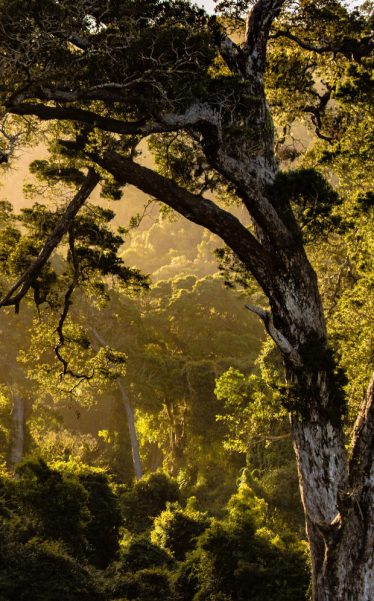
The vast majority of Africa’s tropical moist and tropical rainforests exist in West and Central Africa. Western and Central Africa alone accounts for about 8% of all forests in the world, and 25% of global tropical forests. However, the region is fast losing its forest resources through unsustainable land use practices.
Tropical Africa is facing a huge problem due to the rapid human population growth.
Tropical rainforests are tropical, moist forests of semi-deciduous varieties distributed across nine West African countries. The lack of dependable data and survey information in some countries has made the account of areas of unbroken forest difficult to ascertain. Thus, the amount and rate of deforestation in Africa are less known than other regions of tropics.
Laura Viera A: How does the work develop between you and the governments? Example: Colombia, Peru and Brazil.
Luis Fernando Rios, country manager in Colombia: Since the project is financed by the UK government, the embassies in each of the countries play a very important role of articulation with the governments and decision makers. The embassy also supports us in matters of procedures, consultations, feasibility and many times they support us with approaches to the government. From Colombia P4F, for example, we have articulated with the Humboldt in order to technically support the creation of the non-timber forest products decree (690 of 2021), providing technical inputs from our experience, promoting synergies between the public and private sector (particularly with ANDI), and linking the initiative with the other projects we support in order to validate processes and make proofs of concept. We are currently supporting the socialization phase of this decree with regional authorities in different areas of the country. On the other hand, it is important to mention that depending on the type of project, it is presented to local and/or national authorities in order to not only communicate initiatives but also create synergies.
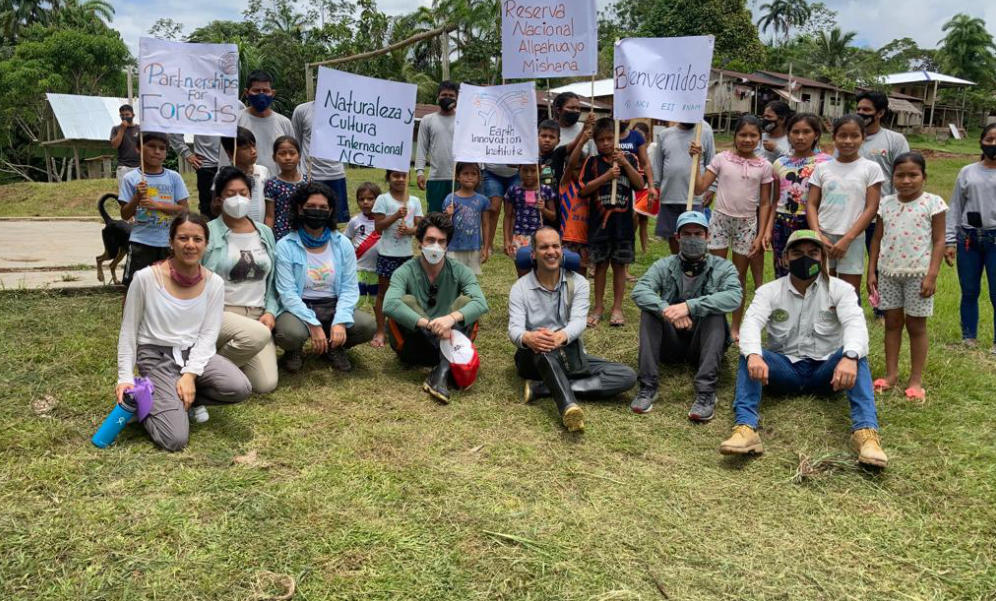
Laura Viera A: How do they work to achieve the changes they want?
Luis Fernando Rios, country manager in Colombia: P4F has several ways of operating. First, we finance projects under the Forest Partnership approach, where we partner and finance initiatives of private sector companies and citizens that catalyze investment in forests and their sustainable use. We also work under enabling conditions (EC) to address critical barriers to sustainable investment. This work includes supporting and sharing research on investment models and facilitating multi-stakeholder dialogue to identify options or strategies to unblock barriers, usually regulatory, for example, the need for a decree in Colombia that would make the rules of the game clear for permits to harvest non-timber forest products. Finally, we also work under the umbrella of “Demand Side Measures” (DSM) supporting the implementation of corporate commitments and the development of new responsible sourcing guidelines and implementation tools.

Laura Viera A: Since P4F was created, have you made any changes? How has the landscape changed?
Luis Fernando Rios, country manager in Colombia: Since its creation, P4F has approved 117 projects in the three regions, financing projects for more than £42 million with a counterpart value of approximately £26 million. Partnerships for Forests has boosted the sustainable use of land and forests by protecting more than 3 million hectares, strengthening deforestation-free value chains and mobilizing private capital for more than £475 million. In addition, the projects developed have included more than 22 agricultural products for which it has been possible to reduce investment risks and generate fair and sustainable market opportunities for local communities. Enterprises offering high quality products have also been strengthened as a clear example of how ambitious conservation goals can be transformed into long-term sustainable business models, both financially, environmentally and socially.
As a matter of fact, land use transformation is responsible for 24% of the impacts of climate change and deforestation is one of the most drastic changes.
So, sustainable land use is very significant.
Sustainable land use systems, whether in agriculture or livestock, have the capacity to promote the incorporation of the vision of the different stakeholders in the value chain from a perspective of economic, environmental and social sustainability.
These systems are designed with a focus on local needs, supported by institutional agreements and driven by market strategies that promote lasting impact.
In this sense, it is possible to intervene in transformed lands with restoration processes that incorporate peace-building objectives, strengthen local governance and improve the living conditions of rural communities.
Concluding
When we take away the forest, it is not just the trees that go. The entire ecosystem begins to fall apart, with dire consequences for all of us.
P4F are still in the project implementation phase and are preparing two final proposals. They continue to build more profitable and sustainable value chains and thus avoid deforestation in the country. The program has until June 2023.

The importance of forests cannot be underestimated. Nevertheless, human impact has already led to the loss of around 40% of the world’s forests. Currently, an area the size of a football pitch is still being destroyed every second. Protecting and restoring forests has never been more urgent.
I conclude with this thought: trees are the building blocks of life on Earth. Trees transform sunlight into energy and food for all the food chains on earth. Trees are the place where our ancestors evolved. Forests protect our planet in many ways and provide a host of benefits for human life but they need our protection.


